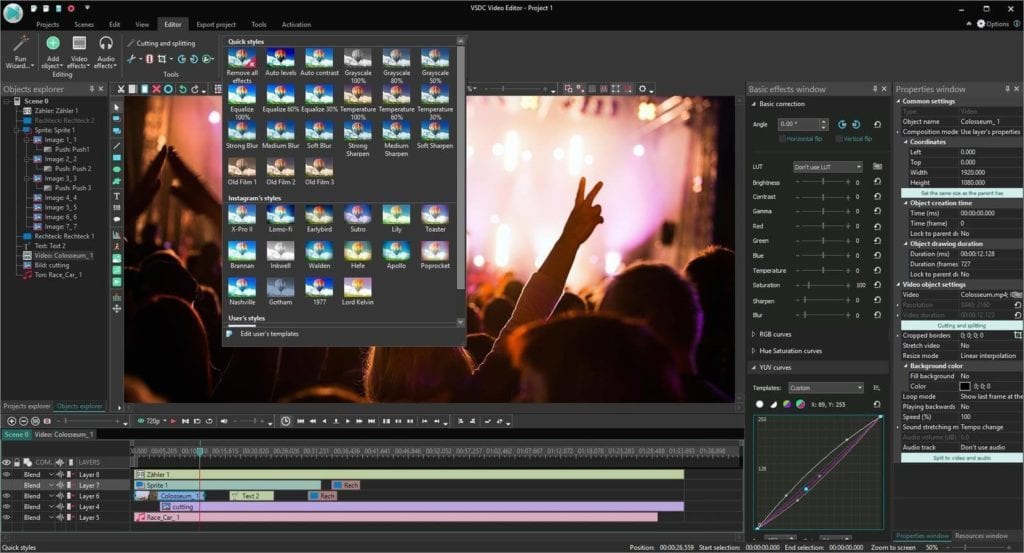

Imerge project files in the HitFilm media panel can be right-clicked and opened in Imerge for editing Access to the Home and Edit screens is moved to the Window menu The entire sliding text effect can now be previewed by moving the composite shot timeline scraper to the start and end of the timeline.- Styling of the interface has been updated with a new default light theme After moving the text (using the arrows) somewhere outside the Viewer container again, a fourth marker will be created automatically at the scraper position. To create the fourth/last marker, move the timeline scraper is situated at the end of the composite shot. After moving the text (using the arrows) somewhere outside the Viewer container, a third marker will be created automatically at the scraper position. To create the start marker, firstly make sure the timeline scraper is situated at the beginning of the composite shot. The start marker needs to be created while the text is outside the screen. Remember that the sliding text effect we want to create slides in from outside the screen (and ends by sliding out of the screen again). Now only the start and end markers remain. Simply copy and paste the first marker to create a second marker and move the second marker to the 5 seconds mark (5 – 1 being 4 seconds). A copy of the first marker situated 4 seconds later on the timeline will do the trick. In our case, the sliding text should remain in this position for a total of 4 seconds. This means the marker needs to be moved (by dragging it) to the 1 seconds mark on the Positions timeline. Because this is a static position marker, it should only show after the text has slided into the screen (which, if you used the composite time settings above, is at about 1 second into the composite shot). Markers can be dragged to different locations on the timeline. The marker will appear in the Position timeline next to the Position settings. To create the first marker, simply click on the Position button. Four markers in total will be created – two for the static position, one for the start position and one for the end position.įirstly, to create the first two markers, go to the newly created composite shot and look for the Position settings under the text Transform settings.īecause the text is already in its static position, we can immediately create the first marker. In our case, markers will be used to set the position at a specific time on the composite shot timeline. In HitFilm Express, sliding effects can be created using a property’s position settings and markers. Now that everything is in place, the sliding effects can be created. At this point, the location/position of the text box is not important.Īfter the text has been added, you can always go back to the created composite shot and double-clicking in the text block after selecting the Text tool/icon. Simply drag a box area that will be about double the size of the text you anticipate to add, click in the box with the text cursor and start typing. Alter selecting the Text icon (or pressing T on the keyboard), the text cursor will appear. In HitFilm Express, text can be created in the Viewer panel. The newly created composite shot will now show up in the Media section and next to the Editor panel. 1 second for sliding in, 4 seconds to show, and 1 second to slide out again). Usually, about 6 seconds is enough for shorter pieces of text (e.g.

In the Composite Shot Properties panel, change the name to something more descriptive and change the duration. Composite shots are created by clicking on the (+) New button below the Media panel and selecting Composite Shot (or by pressing the Ctrl+ Shift+ N on the keyboard). In HitFilm Express, a sliding text effect can easily be created its tools inside a composite shot.


 0 kommentar(er)
0 kommentar(er)
